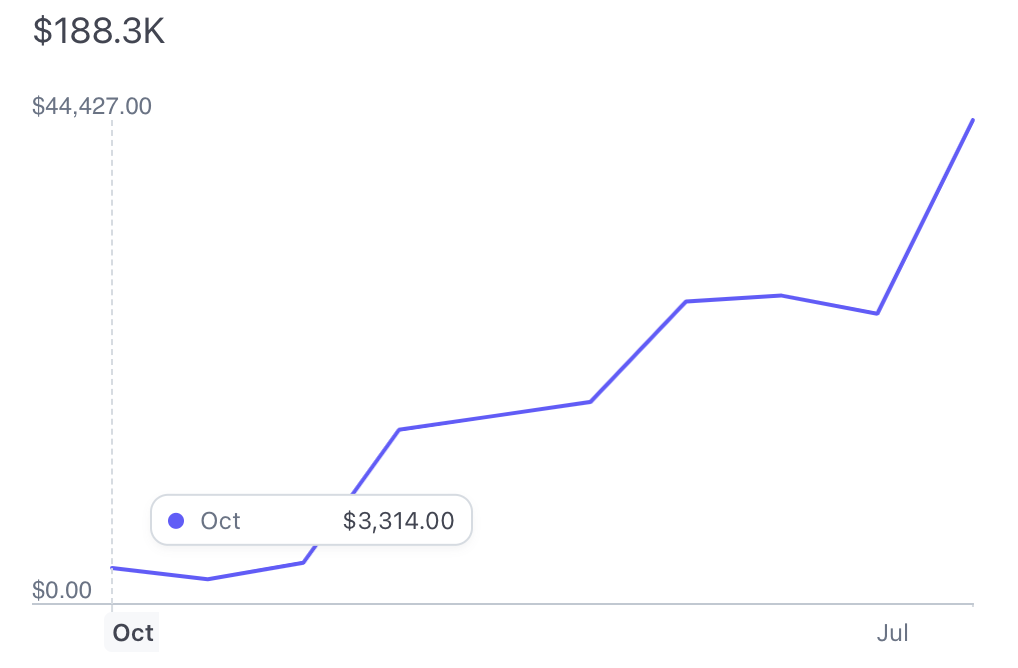Let’s get the important part out of the way. Email courses are our favorite type of lead magnets to create.
When you’re trying to figure out how to build an email list it’s hard to go wrong with an email course. However, that doesn’t mean they are meant for everyone.
In this article, you’re going to learn how to create an email course that not only helps you build your mailing list but also gets you more customers.
Ready? Let’s go and get it.
Why Email Courses Are Great
Let’s face it, it’s not easy to get someone to buy something from you online. There are 1000s of people every single day trying to get you to take out your wallet and spend money with them.
So what is going to make you stand out?
For that, we can take a look at what we call the Pocket Business Framework.
- Get them to notice you
- Get them to pay attention to you
- Get them to trust you
- Convert that trust into money
If you follow this then you’ll succeed at building an online business.

So what do email courses have to do with this? They’re one of the few lead magnets that can take care of every single step in the framework.
You can get people to notice you by offering them an amazing opt-in. 5-Day Bootcamp on how to lose 7 lbs in 5 days the healthy way.
You can get them to pay attention to you by showing them a new way to lose weight that they haven’t encountered before.
You can get them to trust you by ensuring that they get results.
You can convert that trust into money by selling them something once they are done with the BootCamp.
Email courses allow you to maintain the attention of your reader as they learn more about how to progress on their journey. This can only be a good thing for you.
They Are About Building Relationships
One of the unspoken secrets of making money online is how important relationships are with your audience. The more they read you, the closer they get to you and that’s what makes email courses amazing.
It gives you a couple of days of undivided attention by your audience. They’ll get to not only learn how to solve a problem but also more about you.
And that’s just as important as them solving a problem.
An email course allows you to maintain a 1-on-1 conversation with your audience that many brands wish they could have.
Should You Create an Email Course?
However, email courses are not for everyone. Sometimes it doesn’t make sense to create an email course.
For example, if you run a business around baking exquisite desserts then an email course on cupcakes wouldn’t work very well. Nobody wants to wait a day to find out what the next step is!
In that case, you’re better off doing some type of workshop.
However, if you have a bigger problem that can be broken down into steps where a person can wait then an email course might be for you.
Maybe you want to teach people how to effectively trade stocks. Each day you could break down a new principle that they could then apply. In that case, an email course makes perfect sense.
But the beautiful thing about an email course is that you can create it in less than a day and decide if it’s worth putting out there.

How to Create an Email Course That Your Readers Love
Alright, so you want to know how to create an email course that is effective. What are the first steps?
1. Outcome
The first step is understanding the outcome that you want to help the reader achieve.
When they are done with your email course what will they be able to do?
You can’t move on until you answer that question. In essence, you are working backward.
The key here is to find a single outcome that you know you can deliver. For example, if you’re promising to show people how to grow tomatoes in their bathtub then you need to be sure you can help them with that.
Because if something doesn’t work then the whole trust of the email course is gone and they aren’t going to move any further.
Your goal here isn’t to build some Harvard curriculum. You want to keep it simple enough to where it can be accomplished in a couple of days (we tend to go for 5-7 day sequences.).
You’re tying a single email course to a single outcome with the goal that the email course will do one of two things:
- Be a precursor to what someone will need before they buy your offer
- Achieve the same result without your offer as they would with it
Let’s cover both of these points.
The Precursor
The idea here is that you might have an offer that only works with certain education. Instead of packing that education within the offer itself and making it bigger, you can offer it in an email course.
That warms people up to the offer so that when they are presented with it, they don’t have to wonder if they have the knowledge to make use of it.
This is what we do with our Bootcamps. Because we don’t want to pack our offers with too much introductory information, we put that information in a Bootcamp for people to go through.
Once they go through it and have an understanding of our worldviews then it makes sense for them to buy our offer.
Achieving the Same Result
On the surface, this one seems like it doesn’t make any sense. Why would you teach someone how to achieve the same outcome as the one you promise in your offer?
This works if your offer provides a better way. So what you’re doing with your email course is saying that you can help someone achieve an outcome but it’s going to be the longer way.
If you want to do it a shorter way by using an app, tool, or something else, then the offer is available to you.
Specificity Is Good
The key to finding an outcome is being as specific as possible.
I will help you do this in this timeframe.

2. The Timeline
With the outcome out of the way the next step is understanding the timeline.
How long will it take you to teach your readers everything they need to know to achieve the outcome?
Ideally, the length of the course will be between 5 and 10 days. Anything less doesn’t feel substantive enough and anything more you can quickly lose their attention.
If you find that you need more than 10 days to get the point across then you need to go back to the drawing board and see if you can simplify the outcome further.
3. The Structure
Now it’s time to put your email course together.
Day 0. This is the day they get their first email from you when they sign up. This email is your chance to let them know what is coming.
- How many days will the course be?
- What will they be able to do at the end?
- When will the emails arrive?
- Can they reply to you?
What about asking them to whitelist your emails? You can do that but I’ve never found much value in getting people to try to move your emails to different tabs.
A better alternative is to get them to reply to your email by asking them a question. The easier the question the better.
Special Tags
A trick that we like to use is to let them know that the subject lines for the emails in the course will have a special tag attached to them. That way they can filter the emails into a folder and always recognize them.
[BB #0] The Todo List Zero CourseDay 1 – Second to Last Day. This is the meat of everything.
The basic structure of your emails is pretty simple: problem and solution. You let them know the problem that they’ll encounter with this step and then offer them the solution.
You can present the problem through a story or anecdote. Or maybe you want to do a case study.
It can be anything as long as it’s interesting.
And you end your emails with a Cliffhanger. The purpose of the Cliffhanger is to get people excited about the next day’s email.
How do you do a Cliffhanger? After you present the solution you can then hint at the next problem. This will make people want to know what the solution to that problem is but they can only find it in the next email.

The Final Day. This is where you wrap things up. You shouldn’t present them with any new solutions since you are reviewing everything that they’ve covered.
But you’re probably wondering when you sell during an email course. Selling can happen throughout the email course.
You can do soft selling by mentioning your offer in the PS or you can do hard selling which tells them how much time they have left in a special offer.
Or you can choose to make the email course a learning sequence that is then followed by a sales sequence. This is the approach that we often take when building a Feel Good Funnel.
4. The Goals
With your email course done it’s time to start using it to build relationships. But what about conversions? Isn’t that where the money is?
The money is in the relationships because relationships lead to conversions. That’s what makes email courses so great.
Do Email Courses Work?
This is a silly question to ask at the end of the post, but it’s a valid one to ask. An effective email course can do wonders for your business.
Take a look at this chart.

This couldn’t have happened if we hadn’t built out a BootCamp that helped people.
But remember, email courses aren’t for everyone. Although they are highly effective some people might be better off with a different type of lead magnet.

